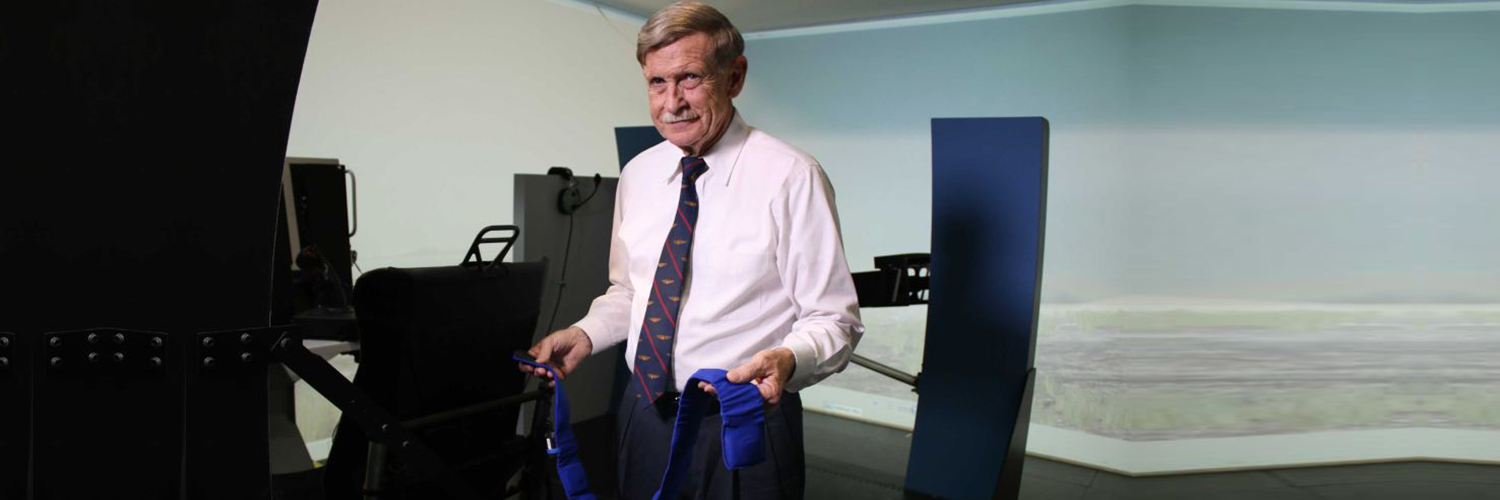Tactile Cueing Tech to Make Aviation Safer


It happens when a pilot becomes distracted in the cockpit and can’t tell up from down. The results can be devastating.
In the US military, it’s estimated more than a quarter of all fatal accidents are caused by spatial disorientation, claiming on average dozens of lives a year.
It also takes a heavy civilian toll. The Australian Transport Safety Board (ATSB) identified spatial disorientation as the cause of the crash of an ABC helicopter in 2011 that killed three people.
It was also blamed for plane crashes in Queensland in 2012 and in Victoria in 2016 that killed 10 people.
If a pilot can’t see the horizon — for instance during bad weather — it can take seconds to lose orientation.
“The simple little act of physics, in that we do not know exactly where down is, has created many mishaps over the years,” said Mr Rupert, who is a medical researcher with the US Army.
His quest to find a solution to improve pilot awareness in the cockpit has brought him to Melbourne as the 2017 Fulbright Distinguished Chair in Advanced Science and Technoogy at the Defence Science and Technology Group.
He’s created the Tactile Cueing System. It’s a belt and harness that contain small pads that vibrate in the direction the aircraft is moving.
“This is a way of providing information very intuitively to a pilot … of what is going on in the environment surrounding them,” Mr Rupert said.
If a helicopter starts to roll left, for example, the pad corresponding to that direction vibrates to alert the pilot.
As the roll becomes more severe, the frequency of the vibration increases.
“This will help prevent accidents from occurring,” Mr Rupert said.
“Pilots are very enthusiastic about this system.”
How the Tactile Cueing System was tested in Australia
The ABC got an exclusive look when the Tactile Cueing System was recently flight tested in an Australian Army Chinook helicopter at RAAF Base Townsville.
“Here in Australia … we’ve progressed the technology quite dramatically,” said Braden McGrath, an aeronautical engineer at the University of Canberra.
“This was the first flight test of a … tactile display in a very highly automated aircraft.”
Mr McGrath is an Australian who has studied at the prestigious Massachusetts Institute of Technology, and wound up at the US Naval Aerospace Medical Research Lab where he met Mr Rupert.
The pair have been developing tactile-cueing technology since the mid-1990s.
In Townsville, the tactile technology helped test pilot Captain Kelly Weatherstone keep track of his position, alongside the Chinook’s sophisticated systems that assist pilots when visibility is low.
“The trial allowed us to collect a lot of very valuable … data,” Captain Weatherstone said.
“With further maturity and development, the Tactile Cueing System has the potential to supplement the existing system.”
Mr McGrath said he believed, based on the test’s results, Defence would move to the next phase. That would mean more test flights with more pilots.
The system’s developers hope adoption of the technology will be faster in Australia than in the US.
“It moves rather slowly [there],” Mr Rupert said, of testing in the American military.
“Because we’re dealing with thousands upon thousands of helicopters that this will go into. For a small organisation, it can be moved more quickly.”
This technology ‘will make flying safer’
For everything from air ambulances to private pilots who fly into bad weather — tactile cueing will boost aviation safety beyond the military.
“The bigger market will actually be in commercial [aviation],” Mr McGrath said.
“Both in commercial airline flights and in general aviation, we absolutely believe that this technology will make flying safer.”
It wouldn’t be the first time technology developed in Australia had a big impact on aviation safety.
Flight-data recorders, the so-called black boxes, were first developed in the 1950s at the Aeronautical Research Laboratory in Melbourne. They’re now standard equipment in aircraft all over the world.
By Norman Hermant, ABC News
Article Originally published on Radio Australia
Feature Image: Norman Hermant, ABC News
Copyright © 2021 – Fulbright


 Facebook
Facebook Twitter
Twitter Linkedin
Linkedin Instagram
Instagram